The global chemicals industry is at a crossroads and our latest report reveals which companies are navigating today’s volatility most effectively.


Global chemicals in the crosshairs: Why China’s overcapacity demands a strategic reckoning
The global chemicals sector is entering a period of profound disruption, not from the next breakthrough in material science, but from the unrelenting industrial scale of China’s production machine. While overcapacity isn’t a new challenge in global commodities, the scale, duration, and structural nature of China’s current chemical surplus sets it apart.
We are witnessing a permanent shift in the balance of global chemical manufacturing power—and it’s time for industry leaders in the West to rethink what competitiveness means.
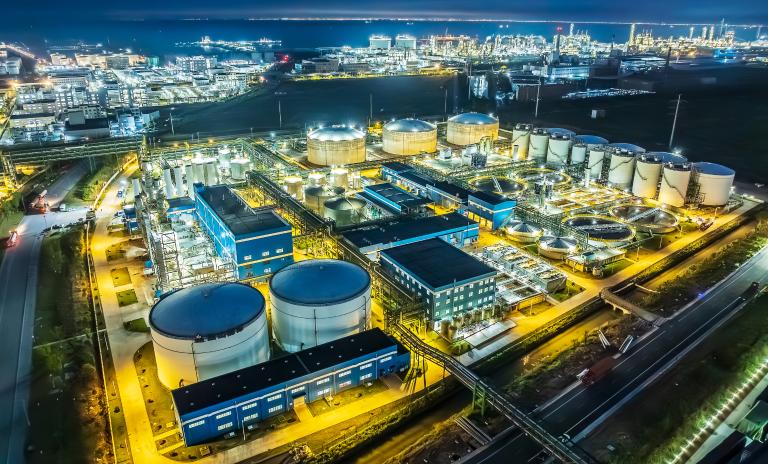
Overcapacity by design, not by accident
Over the past five years, China has aggressively expanded capacity across multiple chemical value chains. Enabled by state incentives, inexpensive financing, and long-term planning, this expansion was predicated on sustained domestic growth and global export potential.
But the growth story has faltered. Demand in China has cooled, and global downstream sectors—from construction to electronics—are facing stagnation. The result? Massive structural overcapacity.
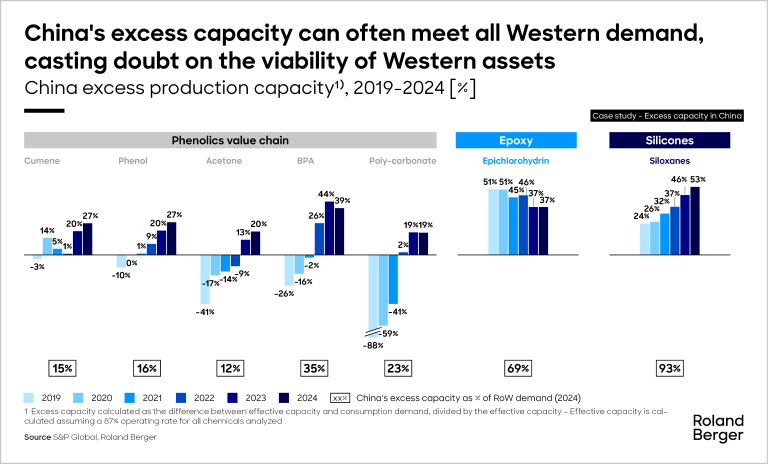
Some segments now reflect surplus levels that would have been unimaginable just a decade ago:
- Epichlorohydrin: 93% excess capacity vs. rest-of-world demand
- Siloxanes: 69%
- Epoxy: 35%
- Phenolics: 23%
These numbers mean China could effectively supply the entire Western market in these categories—and still have excess capacity left unused. This is not just a pricing threat; it’s a viability threat for Western assets.
COVID-19 was a catalyst, not a culprit
The pandemic didn’t create this imbalance—it exposed and accelerated it. Since 2020, production dynamics have become increasingly regionally skewed:
- China: Production continues to rise, despite weaker domestic consumption
- U.S.: Volatile output, challenged by high interest rates, feedstock inflation, and inventory adjustments
- Europe: A sustained decline, as structural disadvantages (energy costs, regulation) erode competitiveness
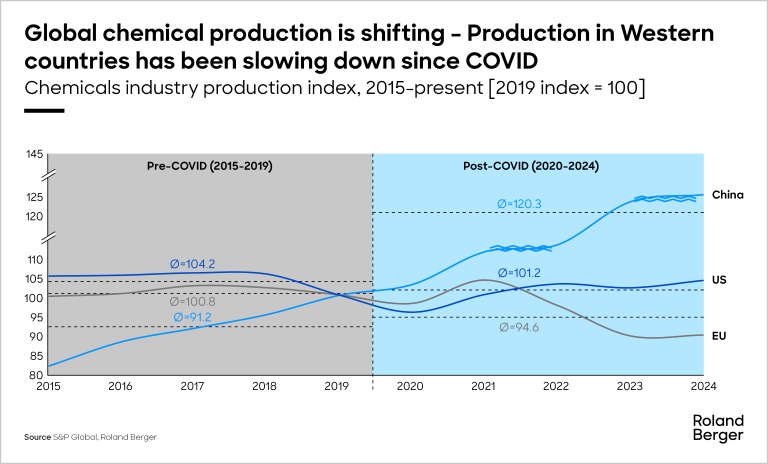
China becoming not just the most significant player, but the price setter in multiple value chains.
Rethinking the western chemicals operating model
For executives at global chemical producers, the implications are stark. The traditional Western operating model, built on large-scale assets, export-driven growth, and competitive feedstocks, is no longer sufficient. China’s cost base, scale, and policy alignment are simply too strong.
This requires a fundamental shift in strategy:
- Move from scale to specialization: The future lies not in commodity volume, but in high-margin, application-driven solutions. Companies must lead with chemistry innovation, not throughput.
- De-risk from global to regional: The case for “local-for-local” manufacturing is no longer just about resilience. It’s about survival. Regional hubs, closer to demand and shielded from global price shocks, may offer a safer path forward.
- Proactively shape policy: Governments in the U.S. and EU are beginning to acknowledge the threat posed by Chinese overcapacity. Industry must partner in developing smarter trade, carbon, and investment policies—not to protect, but to enable transformation.
- Reallocate capital decisively: Underperforming assets will not be rescued by a market rebound. Leadership teams must act quickly to redeploy resources toward downstream integration, specialty portfolios, and digitalized operations.
A new global chemicals map is emerging
China’s overcapacity is not a temporary distortion—it’s the new gravity center of global chemicals. That forces a difficult but necessary question for Western players: What is our right to win in a market where the low-cost producer can out scale, outlast, and undercut almost everyone else?
The answer will not be found solely in cost control. It will require vision, investment, differentiation, and most of all, the courage to walk away from the logic that scale equals security.
The global map of chemicals is being redrawn—not with ink, but with volume, margin pressure, and policy. Those who adapt first will define the contours of the next era.

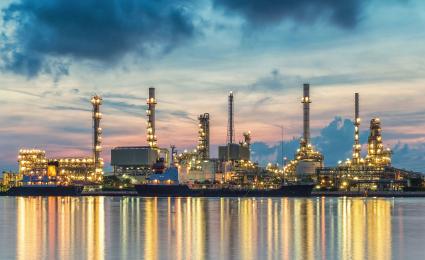
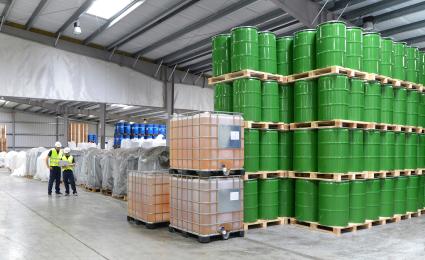
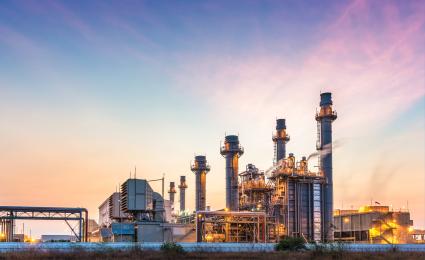
_person_320.png?v=770441)

